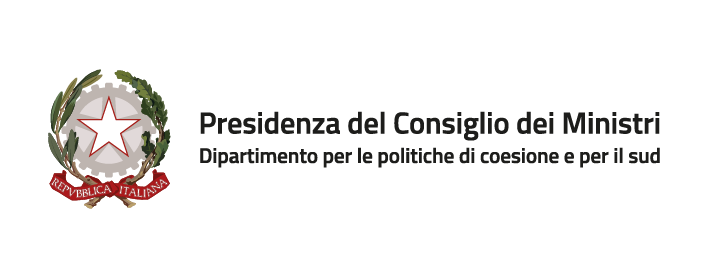Welcome back dear readers.
It is time for data journalism, that piece of history we told through data that we sought, selected, refined and represented through infographics: static or dynamic.
During our research we understood how many subjects are involved in the hydrogeological instability and the effects it causes on our territory. We focused in particular on the data of the ISPRA 2021 report, which provides us with the national framework of landslides, floods and coastal erosion.
In Italy, 93.9% of municipalities are at risk of landslides, floods and/or coastal erosion.
1.3 million inhabitants are at risk of landslides and 6.8 million at risk of flooding. Families at risk for landslides are almost 548,000 and over 2.9 million for floods.
In Italy, more than 322 people died from landslides and floods from 2007 to 2021, 13 were missing, 580 injured, 88,534 evacuated and homeless.(Source CNR –IRPI 2020)
From 2013 to 2019, the economic damage caused by landslides and floods in Italy amounted to 20.3 billion euros, an average of almost 3 billion per year.(GREENPEACE-Source PROTEZIONE CIVILE)
If we focus on our island, we realize that Sicily is among the most fragile regions at national level.
In fact, 89,268 residents live in areas at risk of landslides. In first place in the ranking of areas at risk there is Palermo( have a look at Open Data Sicilia map),with about 34,379people involved, Messina follows with 15,489, and in third place we find Agrigento.
In the area of hydrogeological emergency there are not only people and territory, but also houses, productive activities and cultural heritage. In Sicily, in fact, there are 47,721 buildings, equal to about 2,8% of the total, and 4,219 enterprises that result in areas at risk. Among them there are also about a thousand cultural places.
Coastal erosion is another very serious hydrogeological problem. Sicily is among the regions with the largest number of kilometres of coastline in decline, along with Calabria, Sardinia and Puglia. The data relating to the coast in erosion is equal to 139 kilometres (the second highest data in Italy).
Looking at this data, we immediately wonder why we Italians are so at risk.
While it is true that the Italian territory is very fragile and prone to landslides and floods, we should not forget that very often man has built where he should not. The index of illegal building (ABE) for 2020, in fact, was equal to 17.1 illegal homes per 100 buildings authorized by municipalities.( (Source Ministry of Economy and Finance (STATIC AND DYNAMIC INFOGRAPHIC)
But how much is invested in the problem?
The research carried out with the open data allowed us to deepen the problem we identified in lesson 1. Everything seems to revolve around the word "DELAY".
The national data of the programming cycle 2014-2020 presents us 8001 projects belonging to the theme ENVIRONMENT, financed by the ESF (European Social Fund), NDCF (National Development and Cohesion Fund) and CAP (Cohesion Action Plan), whose total funding amounts to 14,581,191,011 billion euros.
Of these 8001 it is clear that 10.06% are CONCLUDED, 5.65% LIQUIDATED, 68.90% ONGOING and finally 15.39% NOT STARTED yet.
Within the theme environment the data were refined, filtering the projects related to the reduction of hydrogeological risk and soil defence whose nature is INFRASTRUCTURE. It can be seen that 550 projects are financed by the Structural Funds, 594 by the National Development and Cohesion Fund and 351 by the Cohesion Action Plan, for a total of €2,826,987,688.
The calculation of the indices shows that at national level the projects financed by the NDCF have a percentage of 39.73% and 193 have not been started yet.
The 57.24% of NDCF projects have been allocated to the Sicily region for a total of 481,297,213.1 euro and are still underway for 94,12%. A similar delay is also recorded for projects financed by the Structural Funds: the 550 national projects, financed for 915,680,789.1 euro, are still ongoing for about the 87.10%. In particular, the 88 projects of the Sicily region, among which there is ours (INTERVENTI FINALIZZATI ALLA MITIGAZIONE DEI RISCHI DI ALLAGAMENTO NELLA ZONA SUD ORIENTALE), are still ongoing for the 96.70%.
A subsequent comparative analysis shows that the figure for projects still in progress in Sicily is 94.66%, while in the remaining part of the nation it is 67.65%.
Finally, as far as CAP projects are concerned, at national level, it appears that 30.20% of these projects are still ongoing, but no projects have been allocated to Sicily. ( DYNAMIC INFOGRAPHIC)
The question arises spontaneously:
Why are the prevention projects financed by the funds related to the 2014-2020 programming still IN PROGRESS with such a high percentage, if in the meantime in Italy 7,423 municipalities are at risk for landslides, floods and/or coastal erosion?
With the collected data we will go to find our interlocutors.
We’ll keep you informed. Stay tuned.















